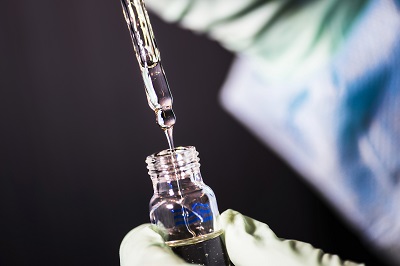Once the D-class medical device registration with the Vietnam Ministry of Health (MOH) is approved, there are several important post-registration considerations that manufacturers, authorized representatives, or importers must address to ensure compliance with ongoing regulatory obligations. Here are the key factors to consider after the registration is approved:
1. Post-Market Surveillance
- Regulation: Ongoing post-market surveillance (PMS) is required to monitor the safety and performance of the device once it is on the market.
- Key Actions:
- Implement a system to collect and track adverse events or complaints related to the device.
- Ensure the device complies with post-market reporting requirements, including reporting serious adverse events to the Vietnam MOH within the specified time frame (usually within 10 days).
- If any risks or issues are identified, take corrective actions, such as device recall or modification.
2. Adverse Event Reporting
- Regulation: If there are any serious adverse events or device-related problems, the manufacturer or authorized representative must report them to the Vietnam MOH.
- Key Actions:
- Maintain records of adverse events and investigations.
- Submit adverse event reports to the MOH as required, particularly for high-risk D-class devices.
- Ensure the device remains safe and effective for use in the market through continued monitoring and corrective actions if necessary.
3. Renewal and Updates to Registration
- Regulation: In Vietnam, medical device registration is typically valid for 5 years. After this period, the device's registration will need to be renewed.
- Key Actions:
- Prepare for registration renewal before the expiration date by updating required documents (e.g., Certificate of Free Sale, ISO 13485 certificate, etc.).
- If there are any changes to the device (such as modifications, new manufacturing sites, or updated clinical data), you must update the registration and submit the necessary documentation.
- Submit a new Certificate of Free Sale (CFS) if applicable.
4. Regulatory Compliance with Labeling and Instructions
- Regulation: The labeling and instructions for use (IFU) of the device must remain compliant with local regulations, including Vietnamese language requirements.
- Key Actions:
- Ensure that the labeling and IFU are up-to-date and reflect any new information or regulatory changes.
- The IFU must remain in Vietnamese and may require updates after changes in clinical indications, warnings, or instructions based on market feedback.
5. Import and Distribution Compliance
- Regulation: Ensure compliance with import and distribution regulations in Vietnam.
- Key Actions:
- Import Permits must be obtained if the device is being imported into Vietnam.
- Verify that your distributors and authorized representatives are compliant with Vietnamese regulations.
- Regularly audit and monitor distributors to ensure the device is being distributed in compliance with registration terms and conditions.
6. Monitoring for Regulatory Changes
- Regulation: The regulatory landscape for medical devices in Vietnam is subject to change, and manufacturers must stay informed about new requirements or changes to existing regulations.
- Key Actions:
- Stay updated with new regulations issued by the Vietnam MOH (such as changes in safety standards, labeling requirements, or post-market surveillance regulations).
- Work with a local regulatory consultant or authorized representative to track any changes that could affect your device's compliance.
7. Quality Management System (QMS) Maintenance
- Regulation: Maintain compliance with ISO 13485 and other relevant quality standards.
- Key Actions:
- Ensure that your Quality Management System (QMS) remains effective and is regularly reviewed.
- Prepare for potential audits by the MOH or local authorities to verify compliance with QMS and GMP standards.
- Update the QMS as necessary, especially if there are changes in manufacturing processes, new product lines, or modifications to the device.
8. Market Feedback and Improvement
- Regulation: The feedback received from healthcare professionals and end-users in Vietnam is essential for continued device improvement.
- Key Actions:
- Collect and analyze feedback, complaints, and suggestions from the market.
- Address any issues related to device performance or usability and consider improvements based on real-world data.
- Implement a system for continuous improvement of the device and its components based on market feedback and regulatory requirements.
9. Device Recall and Corrective Actions
- Regulation: In the event of safety issues, the manufacturer must be prepared for a device recall or corrective action.
- Key Actions:
- Ensure that you have a recall strategy in place, including procedures for notifying customers, distributors, and regulatory authorities (the Vietnam MOH).
- If a safety issue is identified, coordinate with the MOH to recall affected units and notify stakeholders as per the regulations.
10. Audit and Inspection
- Regulation: Regulatory authorities in Vietnam may conduct inspections or audits to ensure ongoing compliance with the medical device regulations.
- Key Actions:
- Be prepared for periodic audits by the Vietnam MOH or third-party auditors.
- Maintain thorough documentation of compliance activities, including quality management, risk management, post-market surveillance, and product complaints.
Summary of Key Post-Registration Considerations:
- Post-market surveillance to monitor device safety and performance.
- Adverse event reporting and compliance with regulatory timelines.
- Registration renewal every 5 years, with updates to the registration as necessary.
- Ensure labeling and IFU comply with Vietnamese regulations.
- Maintain import and distribution compliance in Vietnam.
- Monitor regulatory changes and stay informed on updates.
- Keep your Quality Management System (QMS) and GMP standards in place.
- Market feedback should be used to improve the device.
- Be prepared for device recall and corrective actions if necessary.
- Be ready for audits and inspections by Vietnamese authorities.
By addressing these key post-registration requirements, manufacturers and authorized representatives can ensure that their D-class medical devices remain compliant with Vietnamese regulations and continue to be safely and effectively used in the market.

Contact Us:
Whatsapp or Wechat:+86 15816864648;email address:hito.lin@grzan.cn
.png)
.jpg)



